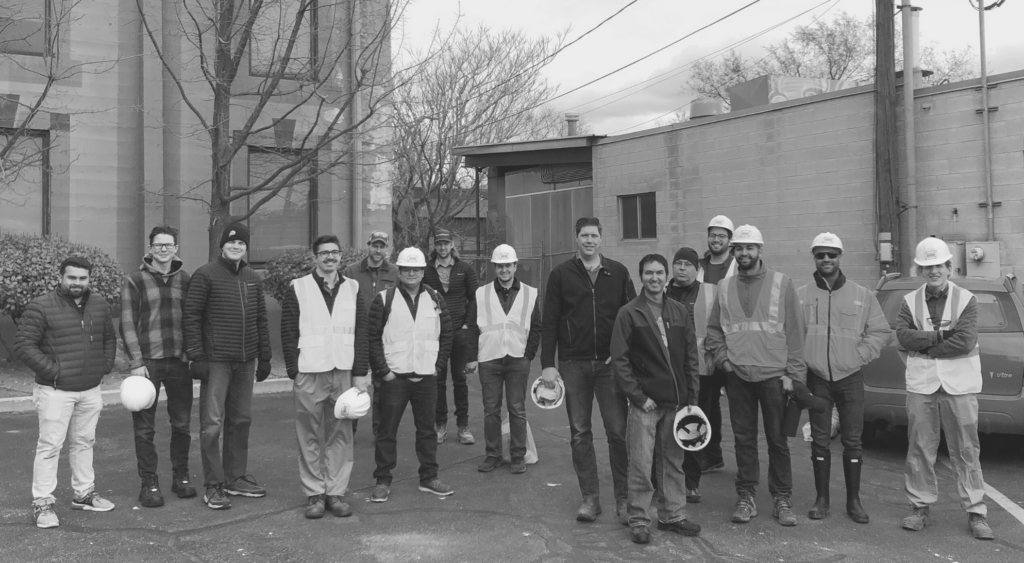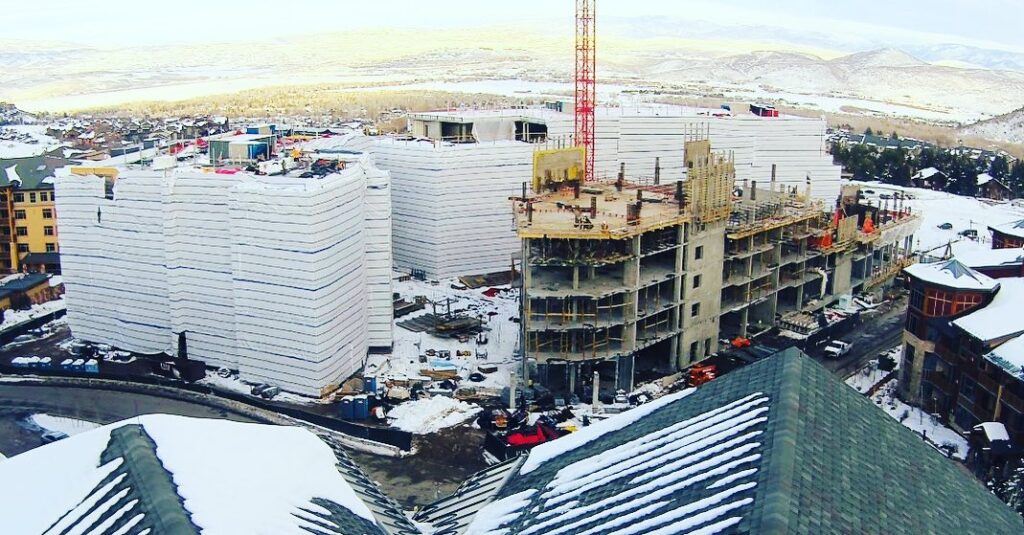I have a lot of respect for contractors. They are out working every day, rain or shine, often working long hours to meet tight deadlines. Their work is not easy. It is physically draining and requires a wide range of expertise and constant coordination. There are regularly hundreds of workers on a jobsite at one time. General contractors are involved from the planning phase through completion of the project. General contractors hire and supervise subcontractors, who are specialized workers trained in specific tasks, such as framers, electricians, concrete workers, and many others. Hundreds, often thousands, of people come together over the course of months to years to transform some plans on paper to beautiful inhabitable structures.
While pursuing my master’s degree in civil engineering at the University of Illinois, I worked part time for a general contractor as a project engineer. I was involved in estimating, finding and coordinating with subcontractors, as well as document control. I worked closely with project managers, superintendents, owners, architects, and engineers. Having had the perspective of both a contractor and now of a structural engineer, I have learned two very important lessons: 1) the importance of coordination between all involved parties and 2) the importance of the small details.
Let’s first talk about coordination. I have found that the best architects, engineers, and contractors are often the best coordinators. They have to be if they want to be successful. There are hundreds of moving parts in a project. Contractors receive individual plans from architects, structural engineers, mechanical engineers, civil engineers, interior designers, landscape architects, and others. Each entity creates their own set of plans and submits them (typically) to the architect, who compiles them before sending them off to the contractor and city for review. With everyone creating their own plans, it is critical for those plans to all be in conformity, which requires lots of collaboration. Lack of collaboration leads to RFI’s and change orders down the road as contractors find areas of contradiction along the way. RFI’s and change orders will happen on every project, but we should be striving to minimize these where possible.
So, what does that collaboration look like? Architects usually take the lead in coordination items, but structural engineers can help push things along and bring up items that need to be discussed. After preliminary design, I like to overlay the architectural drawings on top of our drawings to make sure that everything lines up, wall and column sizes are consistent, and that we generally match what the architect shows. As I go through these drawings and the architect’s details, I mark items that are more challenging structurally or other items that need to be discussed with the architect. These may include the need for more shear wall on the exterior of the building, bearing wall locations, and specific detailing items, among others. Once I have all these compiled, I will send these markups to the architect for review, and that is usually followed up with a phone call. The architect will often come with items they need to discuss as well, such as framing that needs to be adjusted to fit the architectural intent or discussing how potential adjustments will affect the building structurally. Often, there is give and take on both sides as we mold the building into something that works both structurally and architecturally. This process often occurs several times as adjustments are made and as we get more into the design.
Contractors can also be valuable during this coordination process. Sometimes things look good on paper, but can be challenging or expensive to build in the field. Often there are multiple ways to do things, and I like to work with contractors when developing details. They can provide valuable input into what is feasible, cost effective, and time efficient in the field. This coordination often comes as the construction moves forward as well in the form of RFI’s, when contractors will find things in the plans that need clarification or when the contractor requests an alternative way of detailing an item. Where possible, we try to anticipate potential questions in advance and coordinate these during the design phase to limit the need for RFI’s in the future.
Let’s now move onto discussing the importance of the small details. My specialty is in wood design. Wood design includes a lot of moving parts and complicated load paths, which requires a lot of detailing and attention to details. The redundancy in wood design also means that there are many ways to complete the load path. Contractors have thus seen many different ways of doing things, so it is critical to make sure that the design intent is clearly communicated in our plans and details. A missing detail could lead a problem in the future. Contractors are usually pretty good at noticing the holes and asking the question, but close attention to detailing during the design phase can save a lot of time and prevent a lot of head-scratching in the field, and unique conditions may go overlooked with lacking details.
Along with the contractors, city inspectors and plan reviewers are also very good at paying close attention to detail, and they have a large stake in the project as they have the responsibility for making sure the building is designed and built in conformance with life safety standards. Different jurisdictions may have unique requirements. Further inspectors and plan reviewers have lots of experience to pull from. They have seen designs from many engineering consultants and have seen things that work really well and things that may not work as well. This means that it is also important to be on the same page as the city inspectors and plan reviewers. When detailing a project, it is important to know the specific requirements within a jurisdiction and get on the same page with the local life safety inspectors and plan reviewers. Doing so early on can prevent headaches later on for the contractor. Lack of doing so can prevent heartaches for the contractor as the inspector notices things that may not be in conformance with local requirements.
These are just a few of the lessons I’ve learned while working as both a contractor and a structural engineer. I truly enjoy what I do. It is rewarding to be a part of these wonderful projects and to see these building designs come to life. At Dunn Associates, we place a high priority on our relationship with contractors. As structural consulting engineers, we help with the design of important structures, but nothing would ever happen without the good contractors we have the opportunity of working with. We recognize the hard work they do and know that we are both working together toward the same goal of presenting a safe and attractive product to the owner in a timely and cost-effective manner. We recognize that mistakes will be made both on the design team and contractor sides. That is the nature of the industry. But as we work closely with the contractors more closely, these mistakes can be minimized and easily mitigated. I am grateful for contractors and the opportunity I have to work with them as we strive to enhance our communities through our built environment.
Written by Austin, MS
Engineer
Outside of work, I love spending time with my wife and kids. We especially love spending time together in the outdoors, particularly hiking and camping. My wife and I also love to travel and have a goal to visit all of the national parks in the US together. I also love running, fly fishing, and playing the piano and guitar.



